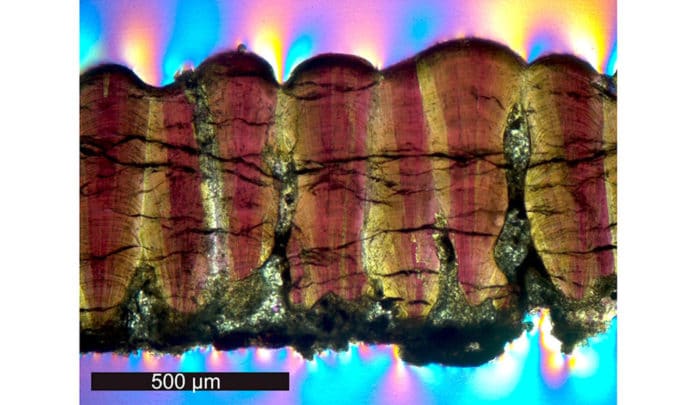Determining the metabolic rates of dinosaurs has remained a persistent challenge ever. Arguments for and against dinosaurian endothermy have been made on the grounds of paleohistology, biophysical models, and isotopic signatures of fossil teeth and eggshells.
A new study by Yale University used a technique that analyzed the chemistry of dinosaur eggshells and found that dinosaurs were warm-blooded.
Scientists tested eggshell fossils representing three significant dinosaur groups, including ones all the more closely identified with winged animals and more related to birds. The testing process is called clumped isotope paleothermometry. It is based on the fact that the ordering of oxygen and carbon atoms in a fossil eggshell is determined by temperature.
For example, the eggshells of a Troodon, a small, meat-eating theropod, tested at 38 degrees, 27 degrees, and 28 degrees Celsius (or 100.4, 80.6, and 82.4 degrees Fahrenheit). Eggshells from the large, duck-billed dinosaur Maiasaura yielded a temperature of 44 degrees Celsius (111.2 degrees Fahrenheit). Both the Troodon and Maiasaura eggshells were from Alberta, Canada. Meanwhile, fossilized dinosaur eggs from the oospecies (a species classification limited to dinosaur eggs)Megaloolithus, from Romania, tested at 36 degrees Celsius (96.8 degrees Fahrenheit).
The same analysis was conducted on cold-blooded invertebrate shells in the same locations as the dinosaur eggshells.
This helped the analysts decide the temperature of the local environment — and whether dinosaur body temperature was higher or lower.
Robin Dawson, a postdoctoral research associate at the University of Massachusetts-Amherst, said, “Troodon samples were as much as 10C degrees (50 degrees Fahrenheit) warmer than their environment, the Maiasaura samples were 15C degrees warmer (59 degrees Fahrenheit), and the Megaloolithus samples were 3-6C degrees (37.4-42.8 degrees Fahrenheit) warmer.”
“What we found indicates that the ability to metabolically raise their temperatures above the environment was an early, evolved trait for dinosaurs.”
Scientists noted, “The findings may have other implications, as well. For example, the study shows that a dinosaur’s body size and growth rate is not necessarily a good indicator of body temperature. The researchers further said their findings might add to the ongoing discussion about the role of feathers in early bird evolution.”
Dawson said, “It’s possible that dense feathers were primarily selected for insulation, as body size decreased in theropod dinosaurs on the evolutionary pathway to modern birds. Feathers could have then later been co-opted for sexual display or flying.”
Journal reference:
- Robin R. Dawson, Daniel J. Field, Pincelli M. Hull, Darla K. Zelenitsky, François Therrien, Hagit P. Affek. Eggshell geochemistry reveals ancestral metabolic thermoregulation in Dinosauria. Science Advances, 2020; DOI: 10.1126/sciadv.aax9361
